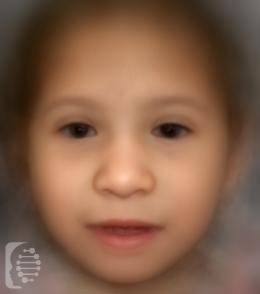What is Dubowitz syndrome?
Dubowitz syndrome is a very rare genetic condition, with less than 200 cases diagnosed worldwide to date.
Currently, the research has not revealed one common genetic cause of the condition, and there are some researchers and medical professionals who continue to argue that it is not a condition simply a collection of symptoms.
The main features of the condition are short stature and susceptibility to specific cancers.
What gene change causes Dubowitz syndrome?
There is currently no common genetic cause identified to cause the syndrome.
The condition appears to be an inherited one, and it is currently thought it is inherited in an autosomal recessive pattern.
Autosomal recessive inheritance means an affected individual receives one copy of a mutated gene from each of their parents, giving them two copies of a mutated gene. Parents, who carry only one copy of the gene mutation will not generally show any symptoms but have a 25% chance of passing the copies of the gene mutations onto each of their children.
What are the main symptoms of Dubowitz syndrome?
Intrauterine growth delay and low birth weight are often the first indicators of the syndrome. Individuals have a short stature, continued slow growth, and a susceptibility to certain types of cancer including leukemia and lymphoma.
Unique facial features of the syndrome include a small head, a triangular or narrow face, droop eyes, ears set too low, sparse hair and eyebrows, and a small jaw.
Immune issues are common, and this triggers recurrent infections including allergies and eczema.
Many individuals with the syndrome are also diagnosed with ADHD and behavioral issues are not uncommon.
Possible clinical traits/features:
Ptosis, Sparse scalp hair, Telecanthus, Strabismus, Microcephaly, Abnormal hair quantity, Sandal gap, Talipes, Respiratory failure, Short palm, Scoliosis, Recurrent infections, Spina bifida occulta, Neuroblastoma, Myopia, Inguinal hernia, Intellectual disability, Intrauterine growth retardation, Narrow face, Low anterior hairline, Sloping forehead, Low-set ears, Low-set, posteriorly rotated ears, Lymphoma, Joint hypermobility, Iris coloboma, Sparse lateral eyebrow, Thrombocytopenia, Muscular hypotonia, Abnormality of female external genitalia, Megalocornea, Metatarsus adductus, Microphthalmia, Pectus excavatum, Micrognathia, Nystagmus, Autosomal recessive inheritance, Pes planus, Otitis media, Toe syndactyly, Seizure, Short attention span, Tapetoretinal degeneration, Sacral dimple, Cutaneous photosensitivity, Wide mouth, Protruding ear, Small face, Submucous cleft hard palate, Velopharyngeal insufficiency, Abnormality of neutrophils, Abnormal fingernail morphology, Abnormality of the antihelix.
How is it diagnosed?
To find out if someone has a diagnosis of Dubowitz syndrome, it is important to have a consultation and evaluation with a clinical genetic specialist. Specialists may also suggest specific genetic testing or other types of tests to help reach a diagnosis. FDNA’s AI technology can help speed up the diagnostic process by analyzing facial features and other health information.

